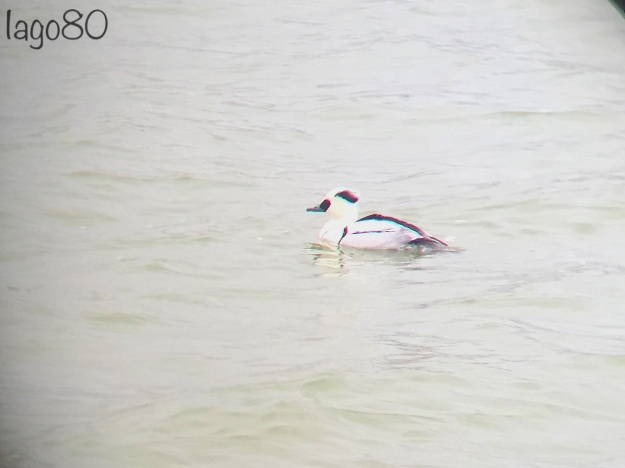Sometimes birding can be an almost spiritual experience: alone in the wild; seeking; observing; experiencing. And sometimes it is… err… not.
I had little time for the patch this weekend, with other commitments. But when our resident larid enthusiast, Tony, found a Mediterranean Gull on Alexandra pond (the first since the likely demise of our annually-appearing old timer, Valentino), or rather when I woke up to see that Jonathan had just seen it on the Western Flats (barely a skip and hop from my front door), I thought I had better check it out.
I found a large flock of Black-headed Gull and Common Gull all facing into the strong wind on the football pitches, and immediately began a thorough scan. I adjusted my position several times to get better views of some of the obscured gulls and scanned again, and again. Despite Jono having seen the Med Gull just half an hour or so before I arrived (and posting photographic proof), I could not find it.
My best find in the large flock was a colour ringed BH Gull. There is something exciting about ringed gulls – to get a sense of the age and provenance of a bird. Was it ringed in Norway, or Germany, or even further afield? When I finally managed to get enough of a view of the markings, I was very quickly a little disappointed. This particular gull, let’s call him ‘2LBA’ now, has already been recorded at least twice on the patch before (once in March of last year, and then again just a few months ago in December), and from Tony’s list, I could see that it was ringed in the exotic location of Fishers Green… just a few miles up the road in June 2015.

Black-headed Gull (Chroicocephalus ridibundus) ringed ‘2LBA’
Tony advised me via a certain restricted character social networking platform to ‘try Alex’. I was hungover, I had a meeting I needed to get to on the other side of London, it was very windy. I questioned how much I wanted a Med Gull on my patch year list. But I went. Right across the whole flipping patch in search for this gull. When I got to Alex, my heart sank, most of the gulls seemed to be circling high in the wind and the rest were spread all over the donut-shaped water and the muddy beaches. It would take a lot of time to scan everything, and I did not have time. To cut this rather lengthy story much shorter… I failed. Gave up. Walked back in the wind, and raced off to my meeting.
Rather like the great Bill Murray in ‘Groundhog Day’, I woke up this morning to more alerts on my phone telling me that the Med Gull was still out there. On the Western Flats again, where it had last been seen, and where I felt sure I had thoroughly checked the day before. I had even less time than yesterday to find it, but I shot out once again, with a buddhist chant on my determined lips – more as a superstitious good luck charm than any profound spiritual incantation. By the time I arrived, today’s ‘finder’, Bob, had already left. Yet again, there was a – slightly smaller this time – flock of grounded gulls. But this time, after a matter of seconds of scanning, I saw it: Initially its smudgy mid-moult head was turned back and its distinctive bill was hidden in its plumage in roost. But its clean, pure white wing-tips were unmistakeable. Before long the big red bill was out and we exchanged glances, I rattled off a couple of distant pics and I let the gulls be.

Mediterranean Gull (Larus melanocephalus)
If that was ‘tick and run’ birding, then an hour or two later I descended into a ‘smash and grab’ exercise. Jono – looking for the Med Gull again – stumbled across a friendly female Red-crested Pochard on Jubilee pond. With my wife and mother waiting in the car, I quickly dashed out around the pond to grab a couple of pics. I was struck by the difference in behaviour between this female – without any fear of humans and clearly looking to be fed – and the male I found last year on Heronry pond that stayed well away from everyone. Perhaps they were both feral. Perhaps this female was, and the male was a true vagrant visitor. I doubt we will ever know. What I do know, is that my slow-moving year-lists increased by ‘two’ today.

Red-crested Pochard (Netta rufina)




